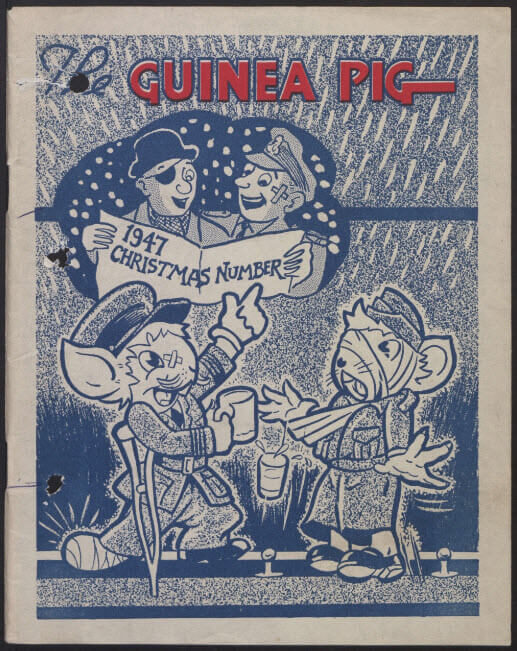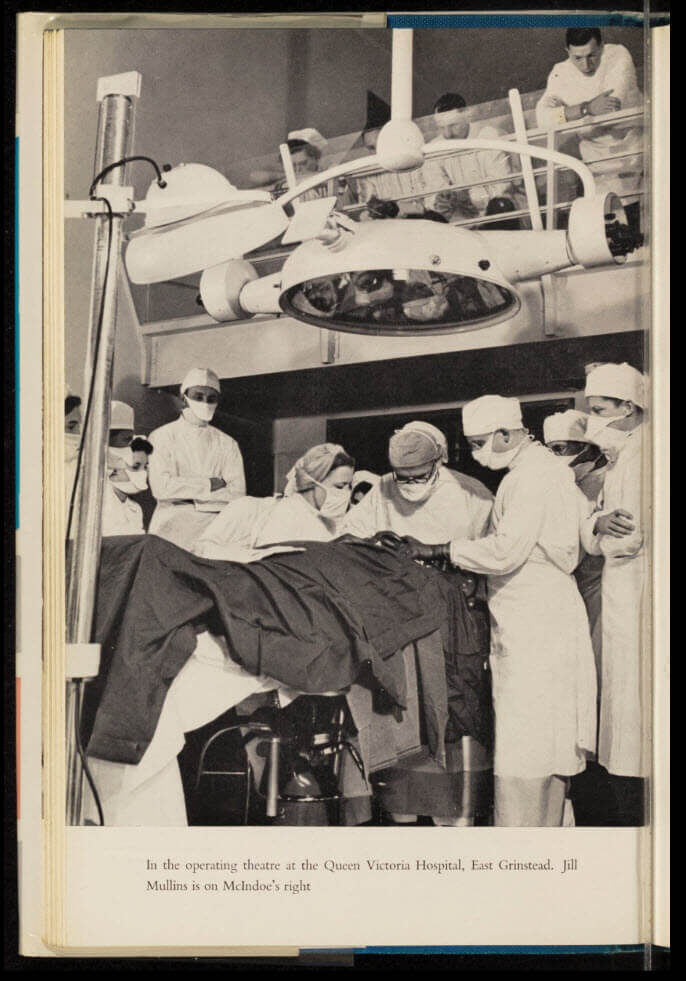An Exclusive Club
This is a special guest blog by Emily Mayhew, a military medical historian who is also a member of the Editorial Board for AM’s new resource, Medical Services and Warfare, 1928-1949.
In the Second World War, the nature of the air war, flying fighter and bomber aircraft, caused an injury so unique it was known specifically as the Airman’s Burn. Airman’s Burn included the destruction of facial features, such as cheeks, eyelids and lips, and substantial damage to the hands. The complex injuries required delicate and lengthy plastic surgery procedures to create replacements using skin grafts. No surgeons anywhere in the world had performed such procedures before, so each patient was an experiment. As the patient cohort grew, they began to see themselves collectively as “Guinea Pigs” and thus the Guinea Pig Club was born. A selection of primary sources relating to this exclusive club can be found in the new resource Medical Services and Warfare 1928-1949 alongside a video interview with Bob Marchant, Secretary of the Guinea Pig Club and former colleague of McIndoe.

Christmas 1947 edition of the Guinea Pig Club Magazine. Reproduced by courtesy of The National Archives, London, England. www.nationalarchives.gov.uk.
Its founders called it “the most exclusive club in the world” and by the end of the war it had 649 Royal Air Force crew members. The entrance fee was “something most men would not care to pay.” Each of them had endured and survived serious burns injury in the course of their service. Additionally, the “arduous conditions of membership” included that those burns injuries were treated at one particular surgical unit, the Queen Victoria hospital at East Grinstead, and by one particular surgeon: Archibald McIndoe.

Material sourced from Special Collections, University of Leeds
McIndoe, born in New Zealand, was the consultant plastic surgeon to the Royal Air Force. Each month of war brought him and his teams of anaesthetists, physiotherapists and nurses new patients for their ward. They learned quickly, and became the leading unit in the world, both during and after the war. Their work was not only about solving the complex surgical challenges but also in securing the recovery for their patients beyond the operating theatre. McIndoe’s philosophy is one that holds as true today as it did in the dark days of 1940:
Real and lasting satisfaction is derived from what the patient does with what the surgeon achieves, rather than from the purely technical aspect of the repair.
For more information about Medical Services and Warfare, including booking a demo and price enquiries, please email us at info@amdigital.co.uk.
Recent posts

The blog highlights American Committee on Africa, module II's rich documentation of anti-apartheid activism, focusing on the National Peace Accord, global solidarity, and student-led divestment campaigns. It explores the pivotal role of universities, protests, and public education in pressuring institutions to divest from apartheid, shaping global attitudes toward social justice and reform.

This blog examines how primary sources can be used to trace the impact of young voices on society, particularly during pivotal voting reforms in the UK and the US. Explore materials that reveal insights into youth activism, intergenerational gaps, and societal perceptions, highlighting their interdisciplinary value for studying youth culture, activism, and girlhood across history.
